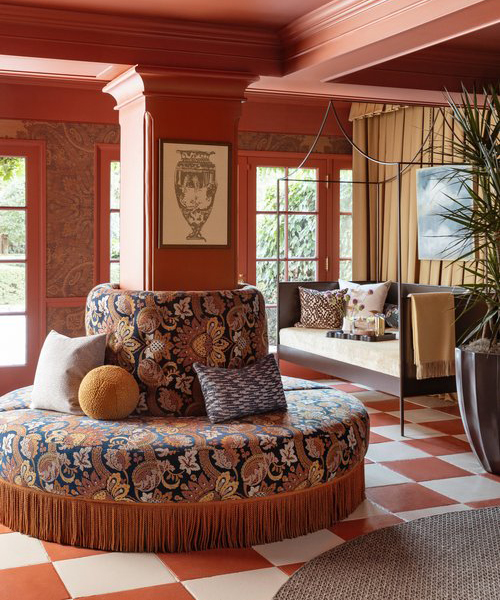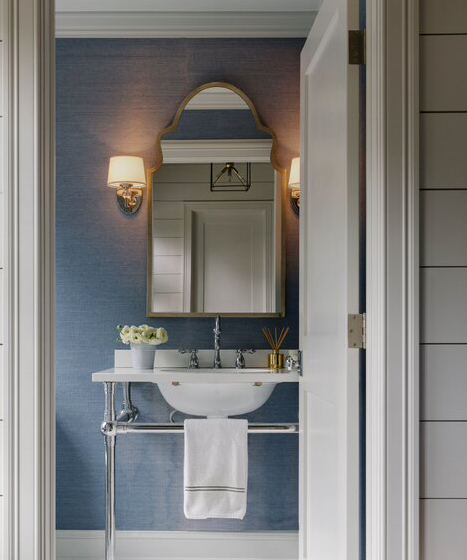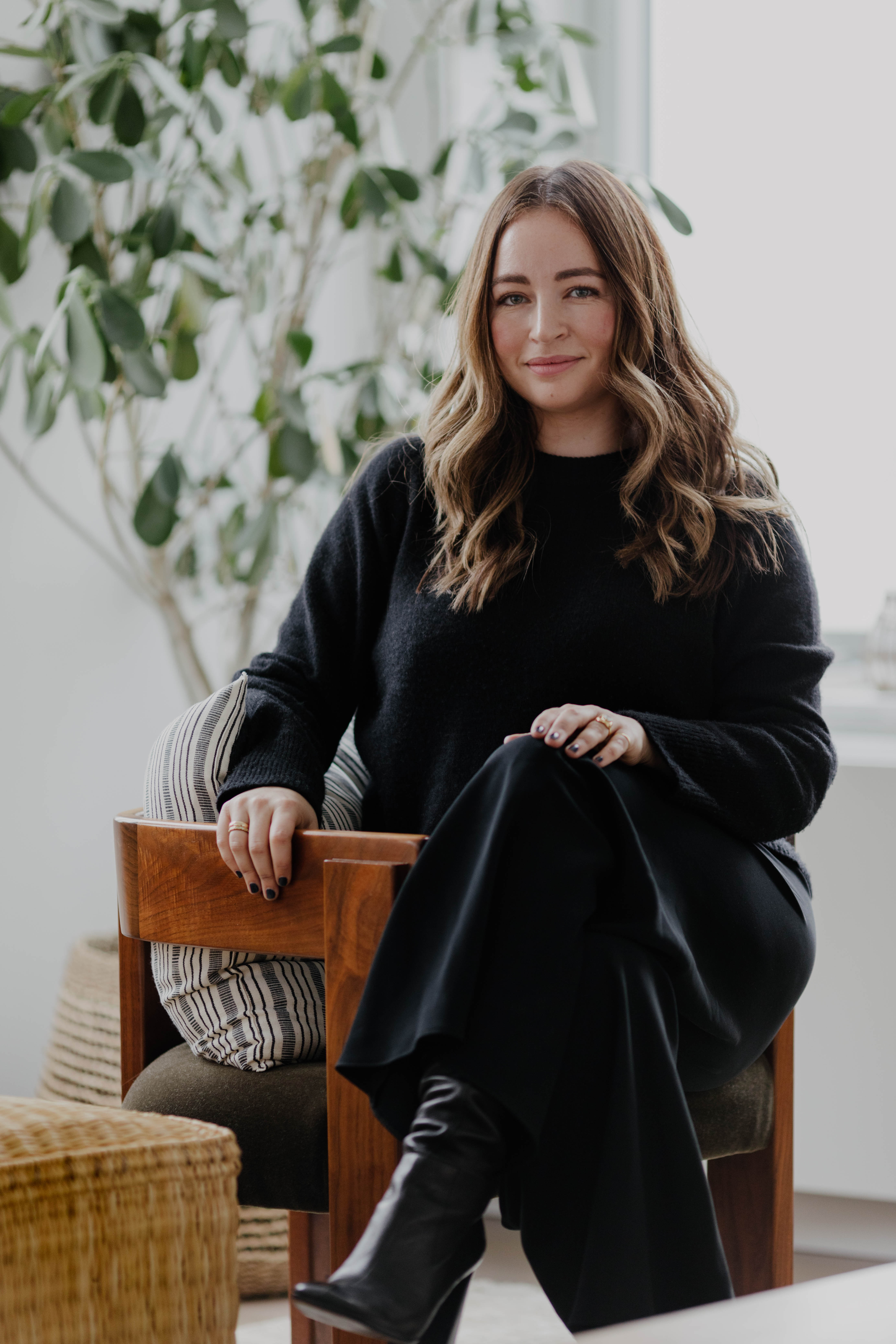How I Fell in Love With Interior Design – And Why I Never Looked Back
It wasn't always my career goal, but here's how I pivoted to being a designer, and why I'm so glad I did


Interior designer Emma Kemper is one of Homes & Gardens' new Editors-At-Large for By Design, sharing her thoughts on decor through her lens of soft light, vintage pieces, and a sepia-tinged palette. See the rest of her articles here.
Not to generalise too much, but being a sociology major can sometimes feel like a subtle red flag that you’re still figuring out what you actually want to do after graduation. Or… maybe that was just me? I remember finishing university with absolutely no idea what came next. Then someone hit me with the classic (and slightly cliché) question: ‘What would you do if money weren’t an object?’ In other words: what did I really want?
Deep down, I knew the answer – I wanted to be an interior designer. But at the time, I had no idea what that even looked like in practice, or how someone actually becomes one. So I packed up my life and moved from New Orleans to New York City, where I landed a very entry-level fashion job at Condé Nast. I loved being close to the glamour, but schlepping garment bags across Manhattan to random photoshoots wasn’t exactly soul-stirring work.
I still vividly remember sitting in a spray-tan salon (yes, we’re going there), when I overheard a girl around my age – maybe 23 – casually mention that she was an interior designer. I had to physically restrain myself from turning to her, grabbing her by the shoulders, and begging, ‘How did you start? Where do you even begin?’

This was pre-social media. I didn’t know of any big-name designers, and even if I had, I wouldn’t have known how to reach them. There wasn’t a roadmap - at least not one I could see.
When I finally made the leap from fashion to interiors (by returning to design school at nysid.com ), I really had no idea what to expect. My only references were interior designers in movies, who always seemed to live impossibly glamorous lives – karate-chopping pillows, carrying around bolts of luxurious fabric, sipping champagne in chic showrooms. And while there is definitely a glamorous side to this job, that’s only a fraction of the reality.
So today, I thought I’d pull back the curtain and share a little behind-the-scenes look at what I truly love about being an interior designer… and a few things I could happily live without.
Design expertise in your inbox – from inspiring decorating ideas and beautiful celebrity homes to practical gardening advice and shopping round-ups.
What I Love the Most About Being an Interior Designer
Here’s an honest look at what I love about interior design.
1. Creating Beauty
There are days – often sparked by being in a space completely void of design, and sometimes by a mood I can’t quite put into words – when I’m hit with a restless, almost urgent energy. The only thing that soothes it is being surrounded by beauty. (My husband recently suggested this might not be the most practical way to live – yet I respectfully disagree.)
When I can channel that energy into a client project, it’s utterly satisfying. It’s as if the vision takes over: I can immediately see how the space should look, function, and, above all, feel. Every detail, from the color on the walls to the smallest piece of flatware, comes together in perfect harmony. The whole space just clicks – it sings, as if the home is designing itself. Creating a world from a blank slate never loses its magic, and that sense of possibility is what keeps me coming back, project after project.
2. Using Both Sides of my Brain
One of the things I love most about interior design is that it allows me to use both sides of my brain. There’s the creative side – the part most people imagine when they think of an interior designer’s day: selecting fabrics, sketching ideas, and envisioning beautiful spaces. But just as vital (and often overlooked) is the practical side. Every project requires careful coordination – balancing budgets, managing timelines, overseeing vendors, and maintaining a high level of organization from start to finish.
When the creative flow isn’t quite clicking, I actually find it grounding to lean into the execution side. There’s a satisfying rhythm to checking things off the list, knowing that all the behind-the-scenes work is what allows the design itself to come to life. At the same time, running a small business adds another layer of creativity: juggling proposals, contracts, invoicing, marketing, and client communications. The business side is its own challenge, and I’ve come to truly appreciate how essential it is to making every project succeed.
3. Collaboration and Connection
Design is deeply personal, and it gives me the chance to connect with people in a way that few professions do. I get to learn about their daily routines, family dynamics, habits, and even the little quirks that make them who they are – all so I can create a space that truly reflects and supports their life. Some of the most fulfilling parts of this work are the relationships I build along the way – not just with clients, but also with the artisans and tradespeople who help bring each project to life.
For the most part, we’re fortunate to work with incredibly kind, trusting clients who are a joy to collaborate with – and who go out of their way to show how much they value our work. That mutual trust makes all the difference.
Over time, I’ve realized that one of the most important decisions I make is who I choose to work with. Mutual respect and good chemistry matter, whether it’s with a client or a contractor. And while I know that being selective is a privilege – not always available at every stage of business – I don’t take that privilege for granted.

What I Don’t Love
The three honest challenges and frustrations that come with being a designer.
1. Blurred Boundaries
While most of our clients are kind, respectful, and a true joy to collaborate with, there are occasional experiences that remind me just how vital boundaries are. Whether it’s being treated dismissively, expected to be available 24/7, or navigating a lack of trust in the process, it can be exhausting. Mutual respect is non-negotiable, and I’ve learned to safeguard that space thoughtfully and deliberately.
2. Unrealistic Expectations
While design shows have done wonders in helping people appreciate the value of good design, they’ve also created a false impression of how quickly and cheaply a space can be transformed. The truth is that thoughtful, enduring design takes time, care, and investment. It’s not all fast-forward and dramatic reveals. And while working within a budget is completely understandable, trying to value-engineer every single detail can backfire – cutting corners often compromises quality, and the finished space rarely feels as considered or lasting as it could.
3. Design by Committee
One client is usually straightforward. Two can be a little tricky. But when clients start polling friends for opinions, and the people involved in the design – like spouses – aren’t communicating directly with each other, things can get complicated fast. I’ve worked on projects where every decision turns into a mini-survey: ‘What do you think of this color?’ or ‘Should we go with this style or that one?’ Meanwhile, one spouse loves a look that the other dislikes, and neither is having the conversation.
While input can be helpful, too many voices and a lack of clear communication often dilute the original vision and slow progress. When clients constantly change their minds based on others’ feedback, moving forward becomes a real challenge. Sometimes, the hardest part of my job isn’t the design itself – it’s the diplomacy required to keep everyone aligned and the project on track.
Despite the occasional stress and late-night problem-solving, I wouldn’t trade this work for anything. The joy of turning a house into a home, of reflecting someone’s personality and lifestyle through design – that’s what makes it all worthwhile. So yes, I love fabric swatches and puzzling together floor plans. But even more than that, I love helping people feel good in the spaces where life happens.

Emma Beryl Kemper is the founder of Emma Beryl Interiors, a New York–based design studio known for its sophisticated yet livable spaces that balance classic refinement with contemporary ease.
Emma’s interiors have been featured in publications such as Architectural Digest, Elle Decor, House Beautiful, Domino, Luxe Interiors + Design, and The Wall Street Journal, among others. She has been named a Next Wave Designer by House Beautiful and included in Elle Decor’s A-List.
Her first book, The Art of Home, celebrates her approach to creating meaningful interiors through storytelling, eclectic sourcing, and a modern eye for proportion. The book reflects her belief that every space should be as expressive as it is functional.
You must confirm your public display name before commenting
Please logout and then login again, you will then be prompted to enter your display name.